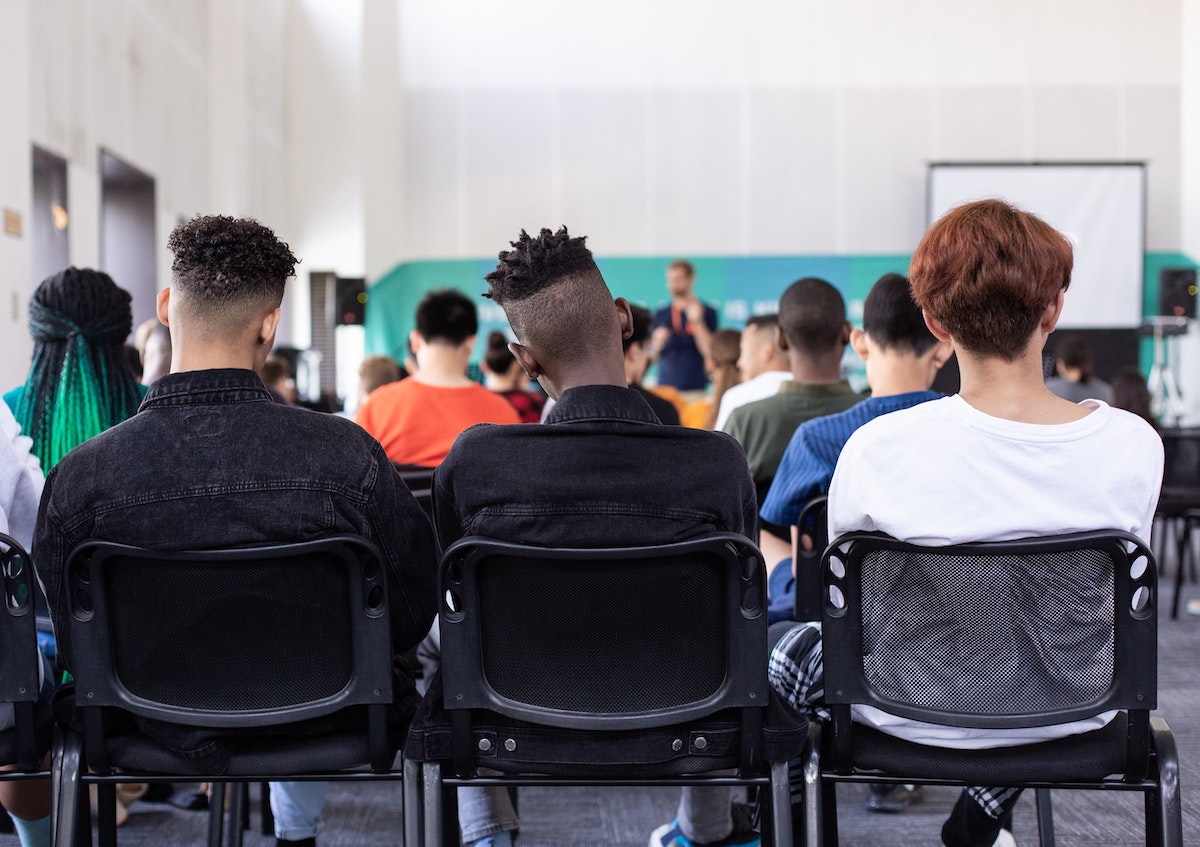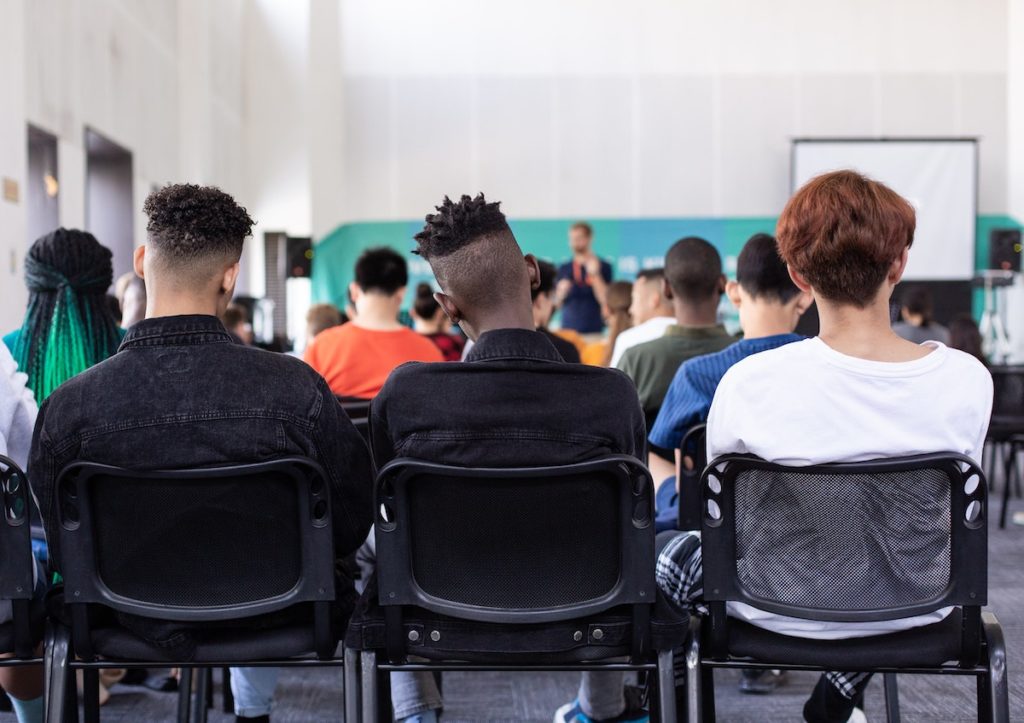Here in Chicago, as is true in many urban centers, some high schools are not meeting the academic or social and emotional needs of young people. Students are expected to be ready for postsecondary education even when they lack the most minimal support necessary to meet those higher standards. Many times, young people fall behind and discover they have been pushed out of their neighborhood schools.
All Chicago Public Schools seniors must develop a postsecondary plan after graduation, but, in many cases, they receive very little assistance in creating their plans. And, of course, when young people are not enrolled in school, they are less prepared for postsecondary options as adults. The lack of postsecondary readiness and mentors willing to guide students through this process is damaging.
But this is not the whole picture. Community-based, alternative school leaders are making a difference. These community leaders exercise power through relationships and interconnectedness. They also commit to creating a future different from the past.
We, the authors of this post, know such leaders and are such leaders. Melissa currently leads Pedro Albizu Campos Alternative High School, which has been serving youth in Humboldt Park since 1972. As the founding principal of Spry Community Links High School, Carlos Azcoitia established a groundbreaking high school model within the bureaucratic confines of a large urban district. From our experiences as leaders in community-based schools that are willing to break the mold, here’s what we’ve observed about student needs and how to meet them.
Our graduates tell us that they initially walked away from an education for a variety of reasons. Many mention receiving very little support in traditional high school to help them succeed and graduate. They saw school as competing with their livelihood and found themselves having to choose between an education and working to help sustain a family in need. Lack of affordable housing only increased the pressure on them to choose work over school. They also describe not having the mental health support and quality health care that can contribute to their well-being, so they did not have to walk away from their education.
Trusting Relationships Help Young People Stay in School
At the same time, our graduates overwhelmingly described how mentors and teachers can provide that personal attention and support needed to motivate and re-engage young people.
When a student becomes disengaged, it is a cry for attention and should be a call for action to the systems and structures that a school has to prepare the necessary interventions and supports to prevent disengagement. Students may feel they are being pushed out of a system that is not supporting their unique needs or pulled out due to pressure from life circumstances beyond the school system.
When we build healthy, strong relationships with students and families, they are able to be honest about the struggles they are facing.
Either way, re-engaging the students requires caring adults in schools. The responsibility for building a safe and caring school environment rests with school leaders and teachers. When we build healthy, strong relationships with students and families, they are able to be honest about the struggles they are facing. Only then can we support that student and family to overcome their particular challenges.
We can recruit mentors and connect them with our students. Mentors can intervene to promote student engagement in school, reduce dropout behavior, and increase school completion. Students who are truant or tardy on a regular basis and have a behavioral, emotional and academic concern can receive a mentor. The new mentor/mentee relationship begins to grow and engagement increases as trust is built. This model provides students with the long-term support they need to achieve success.
Our youth also crave positive student-teacher relationships that build their motivation and create a culture for learning. They crave a sense of belonging and support when they struggle. Quality teachers working to re-engage youth understand that their role goes far beyond curriculum and instruction. To earn their students’ trust, they must develop supportive relationships with them.
What Schools Can Do
Once teachers have established supportive, trusting relationships with their students, schools are in a better position to develop trust with families. Schools can better support families by creating trust, honoring the love of a struggling parent, and linking families with the resources they need. Families should feel safe entering into a school and safe enough to share their struggles. Parents and families should be treated as equals.
Schools need to map the community-based resources and assets that are already available in their neighborhoods and link them to students and families in need.
Schools must also be hubs for community assets and resources. Schools need to map the community-based resources and assets that are already available in their neighborhoods and link them to students and families in need. School leaders need to ensure their staff welcome community-based organizations into a shared space to support students and families in crisis. Once community partnerships and social service agencies are looped into the fabric of a school, leaders and teachers must treat them as full and equal partners in the school community.
At the same time, community partners need to be willing to station themselves inside schools to support students and families and foster deeper community connections and a sense of belonging. Communities need to take a stake in the lives of the youth that are in that community. Community-based organizations need to see themselves as partners in this work and need to be student- and family-centered.
Stories from students who were at one point disengaged from school remind us that they need wrap-around supports and services that are unique and immediate. Students and families are at the center of our work at Pedro Albizu Campos Alternative High School in creating a school community that hosts cross-sector social agencies that can meet their needs, and ultimately, keep students and families engaged in realizing their own potential.
Many times, as principals, we encounter problems in our schools. Community-focused leaders step back from their egos to gain a clearer vision for what is best for the school community. Our task is to become possibility thinkers and develop positive alternatives. For example, at John Spry Community School, we lacked the space for a preschool program during the day. Our alternative solution was to develop an afterschool early childhood program. Although the bureaucracy responded negatively to the idea at first, no law or policy prevented us from pursuing the solution. Parents were willing to bring their children at 3 p.m. and pick them up at 6 p.m. We solved other problems as well, from successfully working with our elected officials to push a city agency to finish street repaving around the school, to hiring and retaining community leaders as lunchroom and custodial staff.
Community-focused leaders firmly believe that there is a common good that can be accomplished. They also know that service leads to justice. Leadership and excellence can be learned and put into practice. Community leaders know the local supports that students and families need. They also know and understand the value of experiential learning. When we lead, students flourish.
Photo by Sam Balye on Unsplash

